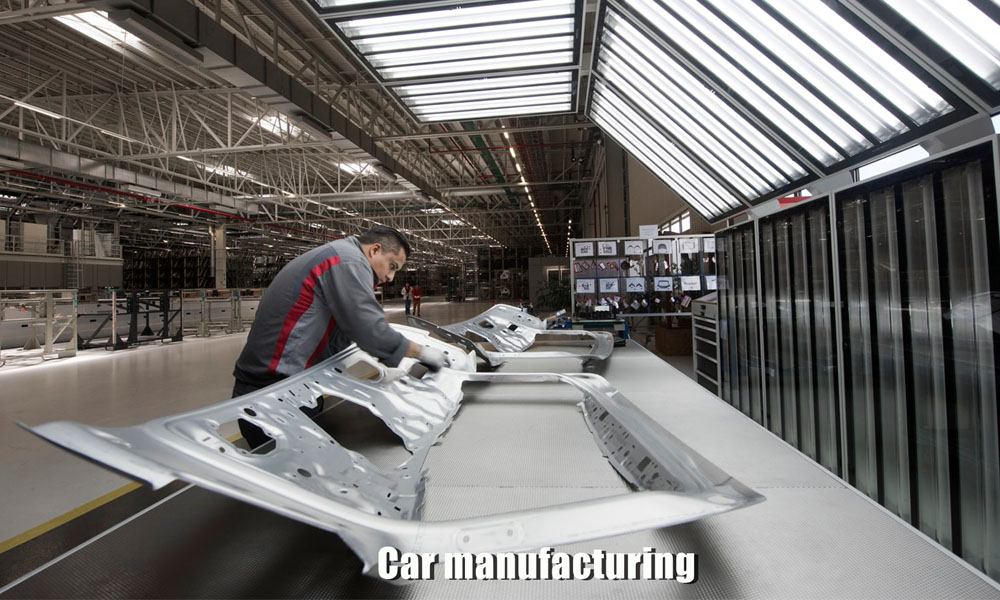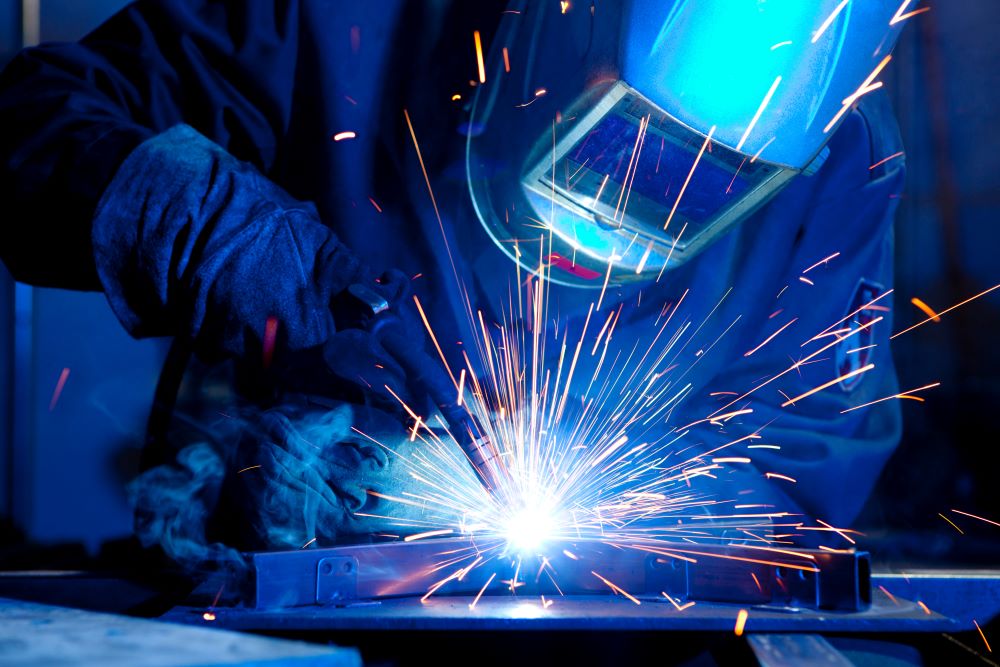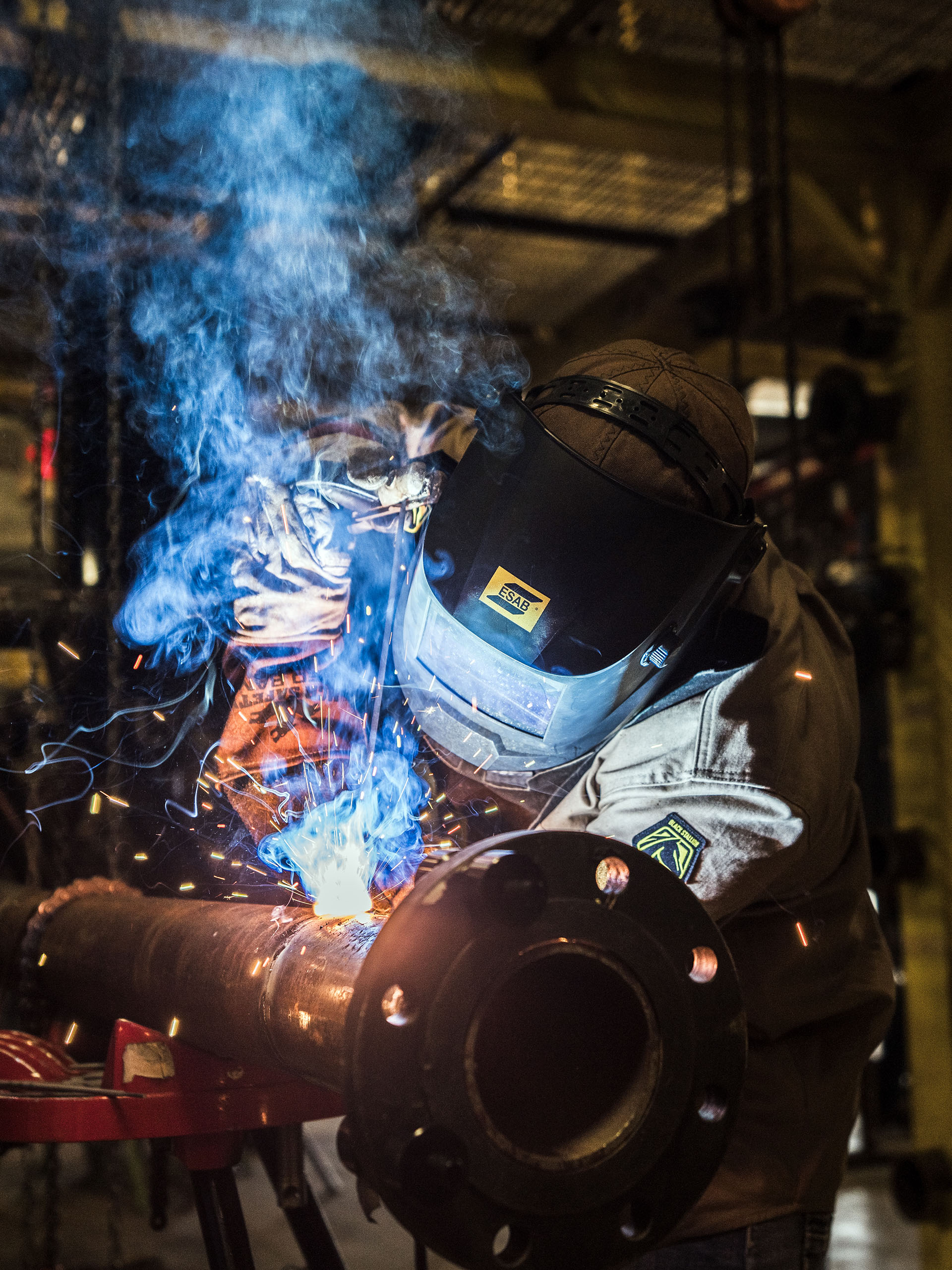Common Welding Repair Work Issues and Exactly How to Address Them Efficiently
Welding repair work commonly come across a variety of concerns that can threaten the stability of the final product. Typical troubles include insufficient infiltration, porosity, and imbalance, among others. Each defect presents distinct obstacles that need specific approaches for resolution. Understanding these concerns is necessary for welders aiming to boost their abilities and results. This discussion will certainly check out these typical welding repair issues and efficient methods to address them.
Poor Penetration
Insufficient penetration takes place when the weld metal falls short to fully fuse with the base material, resulting in weak joints and potential structural failings. This issue frequently comes from insufficient warm input, inaccurate electrode angle, or improper welding rate. Welders may run into poor infiltration because of a miscalculation of the necessary parameters for a details product density or kind. In addition, contamination on the base product's surface can prevent reliable bonding, exacerbating the problem. To attend to insufficient penetration, welders ought to assure appropriate settings on their devices and preserve a clean job surface. Regular inspection of welds is suggested to recognize any type of deficiencies early, permitting for prompt corrections and the prevention of compromised architectural integrity in bonded settings up.
Porosity
Porosity is a typical issue in welded joints that manifests as tiny gas bubbles caught within the weld steel. This defect can jeopardize the stability of the weld, causing lowered stamina and potential failing under tension. Welding. Porosity normally occurs from contamination, moisture, or improper welding strategies, which enable gases to run away right into the molten weld swimming pool. To deal with porosity, welders must ensure correct surface preparation, keep a tidy functioning setting, and use ideal welding criteria. Furthermore, picking the ideal filler material and shielding gas can mitigate gas entrapment. Normal assessment and testing of welds can assist determine porosity early, assuring prompt rehabilitative actions are taken, consequently protecting the high quality and integrity of the bonded framework
Misalignment
Misalignment in welding can develop from numerous variables, including incorrect configuration and thermal development. Understanding the root creates is necessary for efficient resolution. A number of improvement strategies are available to straighten parts and ensure structural honesty.
Reasons of Imbalance
Welding misalignment often comes from a variety of underlying concerns that can compromise architectural stability. One main reason is improper fit-up of components prior to welding, which can lead to voids and irregular surfaces. Variants in thermal expansion during the welding procedure can also cause distortion, especially if the products being joined have different coefficients of development. Furthermore, insufficient clamping and fixturing may fail to hold parts firmly in area, causing movement during welding. Poorly kept tools, including welding devices and tools, may present variances in the weld grain, further adding to misalignment. Operator error, stemming from insufficient training or experience, can likewise play a significant duty in developing misaligned welds.

Improvement Strategies Offered
Resolving imbalance properly calls for a mix of restorative strategies tailored to the details concerns at hand. One typical method is making use of fixtures or jigs to hold elements in the right setting throughout welding, ensuring constant alignment. Furthermore, preheating the materials can help lower distortion and improve fit-up. For substantial imbalance, mechanical realignment techniques, such as making use of hydraulic jacks or clamps, can be used to remedy the setting before welding. Post-weld warm therapy might likewise be needed to eliminate anxieties created by misalignment. Finally, careful assessment and modification throughout the configuration phase can avoid misalignment problems from coming to be substantial problems, promoting a smoother welding procedure and boosting total architectural stability.
Distortion
Distortion is an usual challenge in welding that can occur from various aspects, consisting of irregular heating and air conditioning. Comprehending the sources of distortion is vital for applying reliable prevention techniques. Addressing this problem not only boosts architectural integrity yet also enhances the general top quality of the weld.
Reasons for Distortion
When subjected to the intense warm of welding, materials typically go through modifications that can result in distortion. This phenomenon largely occurs from thermal expansion and tightening throughout the welding procedure. As the weld location heats up, the material increases; upon air conditioning, it contracts, which can produce internal anxieties. In enhancement, uneven home heating throughout a work surface can intensify these tensions, causing warping or flexing. The type of product additionally plays a significant function; metals with varying thermal conductivity and coefficients of development may respond in a different way, leading to unpredictable distortions. Poor joint layout and poor fixturing can add to misalignment during welding, raising the possibility of distortion. Comprehending these causes is crucial for reliable welding repair service and avoidance methods.
Prevention Techniques
Effective avoidance techniques for distortion throughout welding emphasis on managing heat input and making sure appropriate joint design. Preserving a constant warmth input helps to reduce thermal expansion and tightening, which can lead to distortion. Using methods such as preheating the workpiece can likewise decrease the temperature slope, advertising consistent heating. Furthermore, picking suitable joint styles, such as T-joints or lap joints, can boost stability and minimize stress focus. Applying correct fixturing to secure the work surfaces in area better help in preserving alignment during the welding procedure. Lastly, staggered welding series can disperse warm a lot more equally, protecting against localized distortion. By applying these approaches, Learn More Here welders can considerably reduce the likelihood of distortion and boost the total high quality of their welds.
Fracturing
Cracking is a common concern come across in welding repair work, usually resulting from various factors such as improper air conditioning prices, product option, or insufficient joint preparation. The event of fractures can substantially compromise the integrity of the weld, resulting in potential failures during procedure. To resolve this issue, welders have to first examine the root triggers, guaranteeing that products are suitable and appropriately selected for the specific application. Furthermore, regulating the cooling rate during the welding process is important; fast cooling can generate Visit Your URL stress and cause breaking. Correct joint style and prep work also add to minimizing the danger. Applying these approaches can improve weld top quality and resilience, inevitably lowering the possibility of fracturing in finished weldments.

Incomplete Fusion
A substantial issue in welding repairs is incomplete fusion, which takes place when the weld steel does not sufficiently bond with the base product or previous weld passes - Montana Mobile Welding and Repair Belgrade Fabrication. This issue can result in weak points in the joint, potentially endangering the integrity of the welded framework. Elements adding to insufficient combination consist of inadequate heat input, improper welding technique, and contamination of the surface areas being joined. To resolve this concern properly, welders should assure appropriate pre-weld cleansing and surface area prep work, as well as adjust their welding criteria to accomplish appropriate penetration and combination. Regular assessment during the welding procedure can additionally help recognize insufficient blend early, enabling timely corrective steps to boost the total quality of the weld
Overheating
While welding repairs can improve architectural honesty, overheating provides a significant difficulty that can lead to product destruction. Too much heat throughout welding can modify the mechanical buildings of steels, go to this web-site resulting in decreased stamina, boosted brittleness, and warping. This sensation is specifically critical in high-stress applications where structural dependability is paramount. Identifying overheating can include aesthetic assessments for discoloration or distortion, along with keeping track of temperature throughout the welding procedure. To mitigate the dangers related to overheating, welders must use proper methods, such as managing warm input, readjusting traveling rate, and making use of appropriate filler materials. In addition, carrying out pre- and post-weld heat treatments can help bring back product residential properties and improve the general quality of the repair, guaranteeing lasting efficiency and safety and security.
Often Asked Inquiries
What Are the Common Indications of a Welding Defect?

How Can I Check My Welds for High quality?
To test welds for top quality, one can use visual examinations, ultrasonic testing, and radiographic methods. Each technique ensures architectural stability, identifies issues, and verifies adherence to defined requirements, eventually improving the reliability of the bonded joints.
What Safety and security Safety Measures Should I Take While Welding?
When welding, one should prioritize safety by putting on proper personal safety devices, guaranteeing proper air flow, securing flammable products away, keeping a tidy office, and understanding environments to stop injuries and crashes.
Can I Fix a Weld Without Redesigning the Entire Joint?
Fixing a weld without redoing the whole joint is feasible, depending upon the damage (Belgrade Welding). Strategies such as grinding, including filler product, or making use of a welding procedure can effectively attend to certain problems while preserving the surrounding framework
What Equipment Are Essential for Efficient Welding Fixes?
Crucial devices for effective welding repair work consist of a welding machine, cable brush, grinder, safety equipment, clamps, and filler products. Each device plays an essential role in ensuring top quality and safety and security throughout the repair service process. Porosity usually develops from contamination, wetness, or incorrect welding strategies, which allow gases to leave right into the molten weld pool. Poorly maintained equipment, consisting of welding equipments and devices, might present inconsistencies in the weld grain, additional adding to misalignment. When subjected to the intense warm of welding, products commonly undergo adjustments that can lead to distortion. Splitting is an usual concern come across in welding repairs, frequently resulting from various aspects such as incorrect cooling prices, material selection, or insufficient joint preparation. A significant problem in welding repairs is incomplete fusion, which takes place when the weld metal does not appropriately bond with the base material or previous weld passes.
Comments on “Common problems explained and solved by Montana Mobile Welding and Repair Belgrade Fabrication”